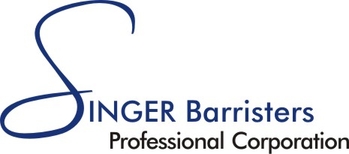A new system that came into effect April 1 will see accident benefits disputes head to the Licensing Appeals Tribunal (LAT) instead of the Financial Services Commission of Ontario (FSCO) — but as Toronto personal injury lawyer Darryl Singer tells Law Times, he already has a number of key concerns with the new process.
While the system promises a speedy resolution of disputes, Law Times says it remains to be seen if it can deliver on its goal to resolve matters in a six-month time frame. Singer, principal of Singer Barristers Professional Corporation, says the fact that applicants have to pay a $100 fee at the start of the process is a problem.
“FSCO had no fee until an application for arbitration was made. Well over 50 per cent settled quickly at the mediation stage with no out-of-pocket disbursements. When the $100 was paid, the insurer had to file $3,000 to respond and engage outside counsel. It was a leverage to get a lot of files settled,” he says.
As Singer explains, at the LAT, insurers will also pay on a points system, proportional with their usage of the process.
“Under the old system, the payment came out of the reserve the adjuster had set aside for the file. I suspect it will now come out of a different pool and will not affect the adjusters. It is a global amount, not a file-by-file amount,” he says in the article.
Singer thinks that this will prove to be a burden for applicants and law firms who act on a contingency basis.
“It will weed out the firms that will take these files, especially the smaller, paralegal firms. It’s not economically feasible to take a lot of smaller files. The mechanism to fight them is not advantageous. We will end up like family law with so many self-represented parties,” he says.
The FSCO also had a 90-day timeline that worked out to an average of nine months.
“There are just too many applications for the resources. It won’t take very long for the back to break on this system,” he adds.
“Given how long it takes to get records from doctors, hospitals, and OHIP, the timeline isn’t ever able to be met in practical terms.”
Singer also says he is concerned that the new case conference may often be done by phone.
“There is a lot of leverage in face-to-face, in-person meetings. Until the adjuster and defence lawyer meet with the person, there is no human element. When they are there in person, they can see the person has injuries and that they will make a good witness. They see that they have some exposure and should settle. At the LAT, the case conference administrator has the sole discretion to decide whether our hearing is in person or a paper hearing,” he says.
